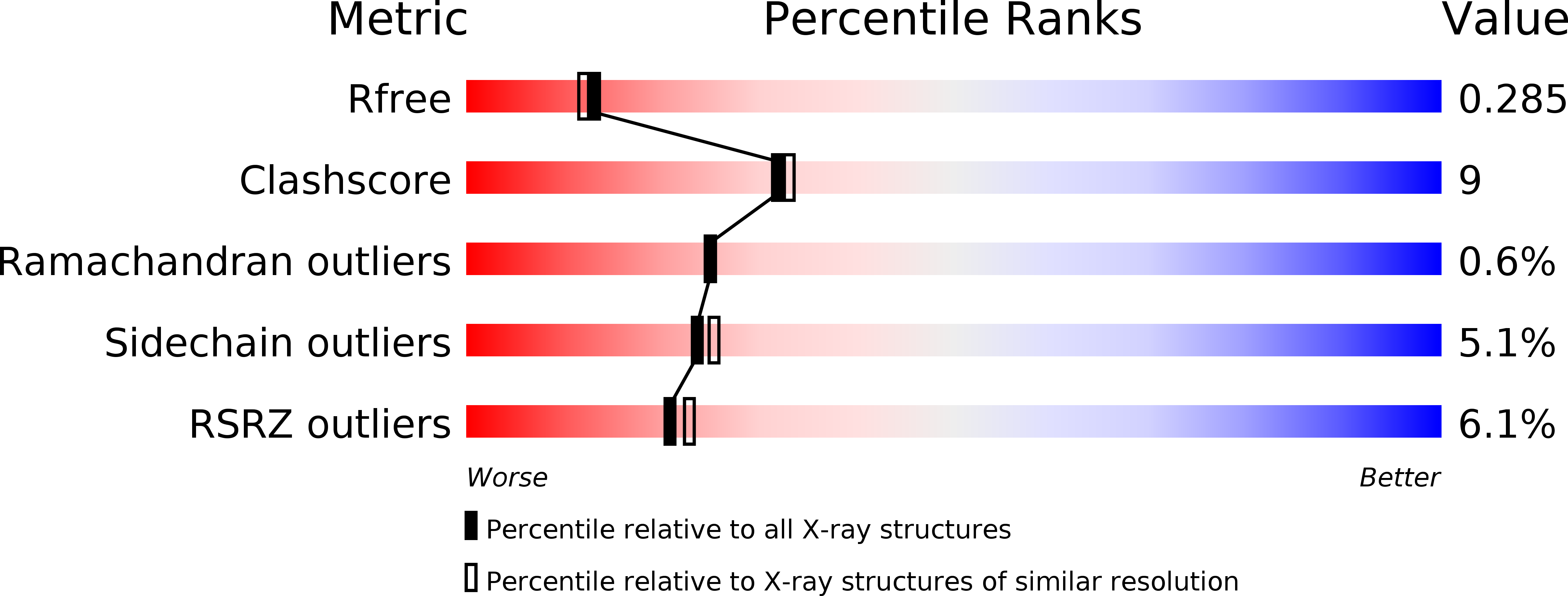
Deposition Date
2018-01-04
Release Date
2018-12-12
Last Version Date
2024-10-23
Entry Detail
PDB ID:
6C1I
Keywords:
Title:
Crystal Structure of Human PPARgamma Ligand Binding Domain in Complex with T0070907
Biological Source:
Source Organism:
Homo sapiens (Taxon ID: 9606)
Host Organism:
Method Details:
Experimental Method:
Resolution:
2.26 Å
R-Value Free:
0.28
R-Value Work:
0.21
R-Value Observed:
0.21
Space Group:
C 1 2 1


